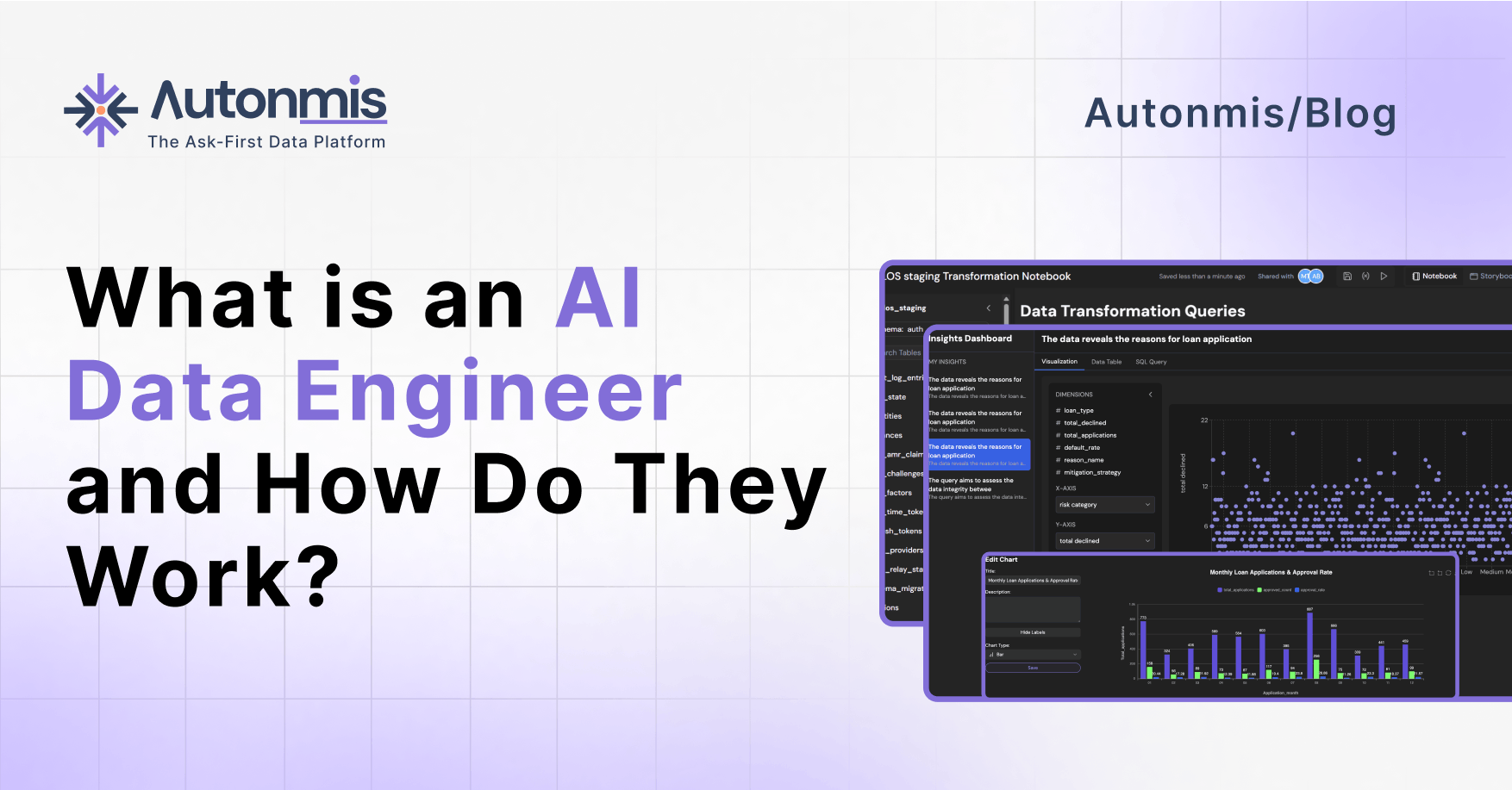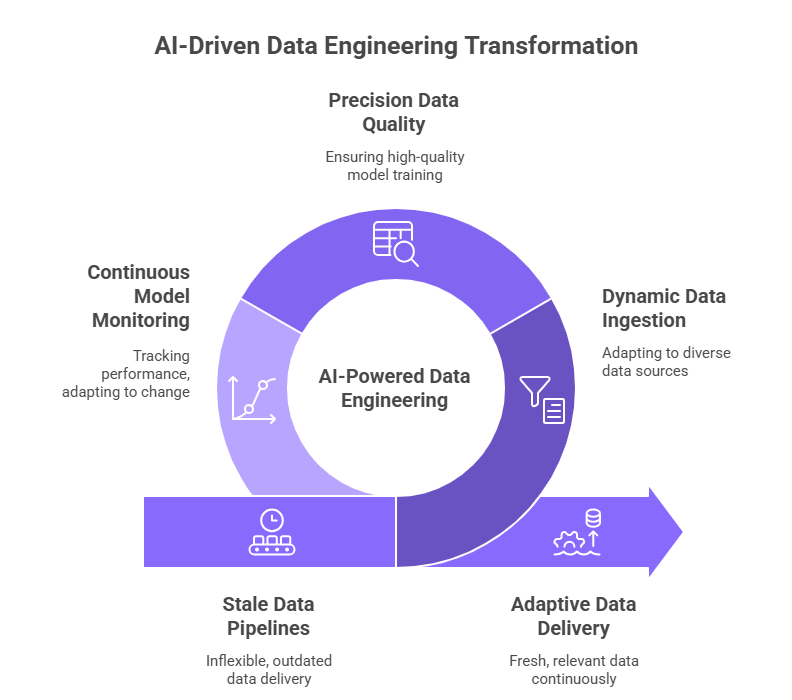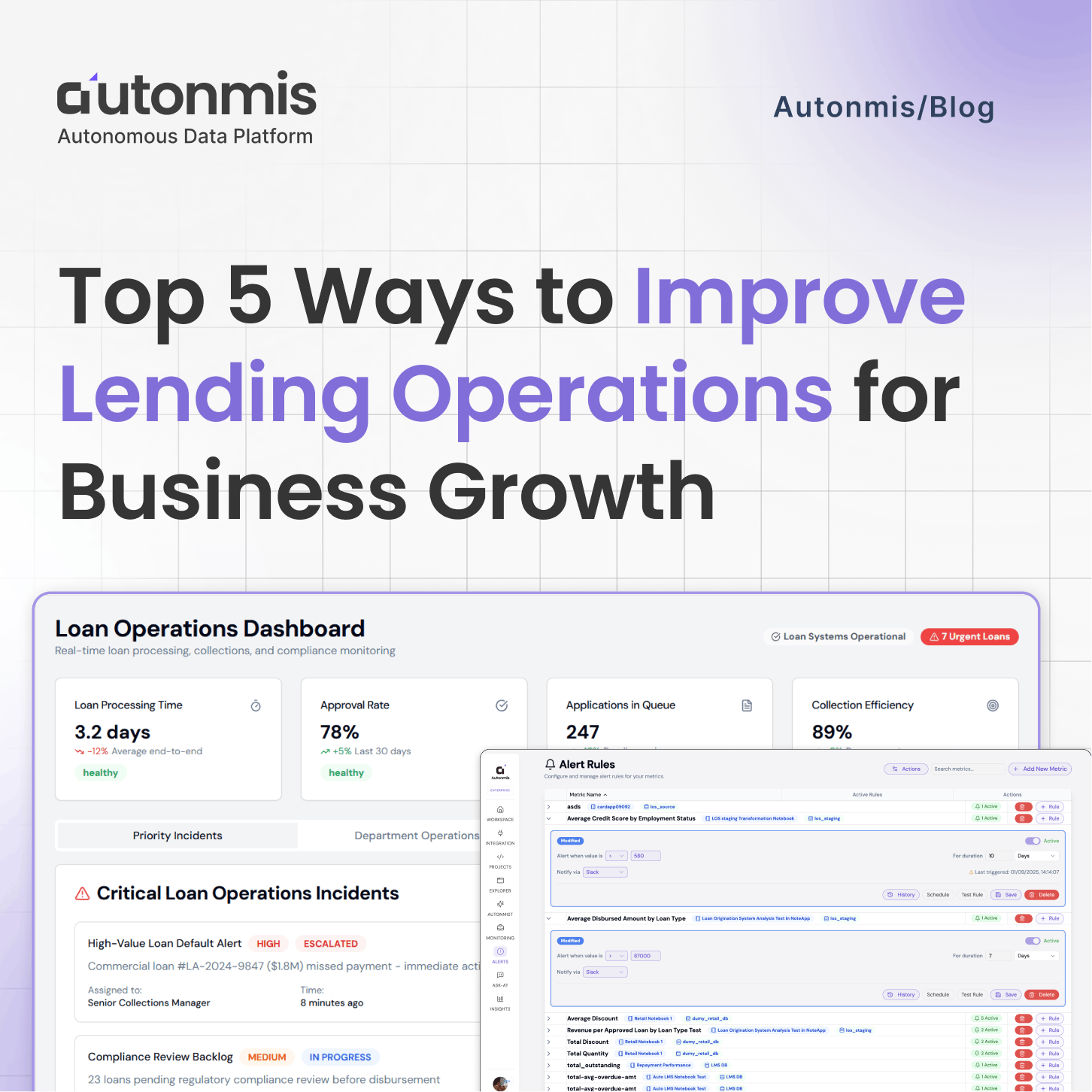Table of Contents
Loading table of contents...
What is an AI Data Engineer and How Do They Work?
Explore what is an AI Data Engineer and why their role is crucial in today's data-driven landscape. Understand the shift from traditional data engineering to AI-focused strategies.
May 16, 2025

AB

I remember the exact moment I realized traditional data engineering wasn't enough anymore. It was 2022, and our machine learning team had been waiting three weeks for properly formatted training data while our beautifully architected data warehouse hummed along serving business intelligence dashboards perfectly. That's when it hit me—AI doesn't just need data; it needs data engineered specifically for its unique demands.
The emergence of the AI Data Engineer role isn't just another job title evolution. It represents a fundamental shift in how we approach data infrastructure in an AI-driven world.
Beyond Traditional Data Engineering: The AI Difference
Traditional data engineers are the backbone of any data-driven organization. They build the pipelines that keep our dashboards green and our analysts happy. But when you add "AI" to that title, you're entering entirely different territory.
Here's why AI changes everything about data engineering:
Scale Beyond Imagination: We're not talking about gigabytes or even terabytes anymore. Modern AI models consume petabytes of data, and they're hungry for more. The infrastructure requirements jump exponentially.
Diverse Data Appetites: While traditional BI typically works with structured data from databases, AI models feast on everything—text documents, images, audio files, streaming sensor data, and complex nested JSON structures from APIs.
Precision in Preparation: A small data quality issue that might cause a minor reporting discrepancy can completely derail model training that took weeks and thousands of dollars in compute resources.
Dynamic Requirements: Unlike static reports, AI models evolve continuously. They need fresh data, updated features, and constant monitoring for performance degradation as real-world patterns shift.
I learned this lesson firsthand when our customer churn model started failing mysteriously after six months in production. The issue? Our data pipeline was still pulling customer data using pre-pandemic patterns, but post-pandemic customer behavior had fundamentally changed. Traditional monitoring would have missed this entirely.

Checkout: What Is Univariate Analysis? How to Use It in Data Exploration
The Day-to-Day Reality of AI Data Engineering
Building AI-Optimized Data Pipelines
This goes far beyond standard ETL processes. AI data engineers architect sophisticated pipelines that handle:
- Real-time streaming data for models that need instant predictions
- Complex feature engineering that might involve aggregating data across multiple time windows
- Data validation at scale using statistical methods to catch anomalies before they reach models
For example, when building a recommendation system last year, we needed to process user behavior data in real-time while also incorporating historical purchase patterns, seasonal trends, and inventory availability. The pipeline complexity was unlike anything in our traditional BI stack.
Feature Engineering and Management
One of the most critical yet underappreciated aspects of AI data engineering is feature management. Features are the variables that machine learning models use to make predictions, and creating good features often determines whether a model succeeds or fails.
AI data engineers work closely with data scientists to:
- Transform raw data into meaningful signals
- Create feature stores that serve as centralized repositories of pre-computed features
- Version features so models can be reproduced and debugged months later
- Monitor feature distributions to detect when they drift from training expectations
Data Versioning and Lineage
Just like code, data used for AI models needs rigorous version control. When a model starts behaving unexpectedly in production, you need to trace exactly which data was used for training and how it was processed.
AI data engineers implement:
- Data versioning systems that track every change to datasets
- Lineage tracking that maps the journey of data from source to model
- Reproducibility frameworks that let you recreate exact training conditions months later
MLOps: The Data Backbone
AI data engineers form the data foundation of MLOps, ensuring models have reliable, consistent data flows in production. This involves:
Real-time Inference Pipelines: Building systems that can serve features to models making thousands of predictions per second.
Batch Prediction Workflows: Orchestrating nightly or weekly batch jobs that generate predictions for millions of customers.
Data Drift Monitoring: Continuously comparing production data distributions to training data to catch performance issues before they impact business metrics.

Checkout: What is an AI Data Platform and How Does It Work?
Why This Isn't Just Hype: The Real Impact
Let's be honest, new roles pop up all the time. Why is the AI Data Engineer such a big deal? Because they tackle the single biggest headache in AI: data preparation. You know the stats – Data Scientists can spend up to 80% of their time just wrestling data into shape.
AI Data Engineers are your solution to:
- Turbocharge AI Development: Get those brilliant AI ideas from whiteboard to reality, faster. High-quality, model-ready data is the ultimate shortcut.
- Boost Model IQ and Reliability: Better data in, smarter and more dependable AI out. Robust pipelines are key.
- Scale Your AI Dreams: Got ambitions for enterprise-wide AI? These are the folks who build the data foundations to support it.
- Actually Become Data-Driven: They make complex data accessible and usable for your most advanced AI plays.
Organizations that get this role right are the ones pulling ahead in the AI race. It's that simple.
The Strategic Impact
Organizations investing in AI data engineering see dramatic improvements in:
Development Velocity
When data scientists spend 20% of their time on data preparation instead of 80%, innovation accelerates exponentially. I've seen teams cut model development time from months to weeks.
Model Reliability
Robust data pipelines with continuous monitoring lead to more stable models in production. One company I worked with reduced model performance alerts by 85% after implementing proper AI data engineering practices.
Scalable AI Initiatives
With solid data infrastructure, organizations can deploy AI across multiple use cases without rebuilding everything from scratch.
Leveraging Modern AI-Powered Data Platforms
The landscape of tools available to AI data engineers continues evolving rapidly. Modern autonomous data workspaces are transforming how we approach these challenges.
Platforms like Autonmis exemplify this evolution, offering AI-powered data platform capabilities that streamline traditional AI data engineering tasks. Their unified data platform approach enables:
- Conversational analytics for rapid data exploration and feature discovery
- Natural language data queries that accelerate initial data understanding
- Collaborative data analytics that bridge the gap between technical and business teams
- Data workflow automation that reduces repetitive pipeline maintenance
For AI data engineers, these tools become force multipliers, allowing focus on complex architectural decisions rather than routine data manipulation tasks. The modern data stack approach integrates seamlessly with existing MLOps workflows while providing the business intelligence platform capabilities needed for stakeholder communication.
Learn more about how autonomous data platforms can enhance your AI data engineering workflow at Autonmis.
Checkout: How to Use Autonmis for Streamlined Data Analysis: A Practical Guide
The Future of AI Data Engineering
The demand for AI data engineers isn't slowing down—it's accelerating. As AI becomes embedded in every business process, the professionals who can architect the data infrastructure powering these systems become increasingly valuable.
This role demands continuous learning. The tools, techniques, and best practices evolve constantly. What worked for training models two years ago might be completely obsolete today.
But that's also what makes it exciting. You're not just moving data around—you're building the foundation for the next generation of intelligent systems that will transform how businesses operate.
For data professionals considering this path: start building AI-specific skills now. Learn about feature stores, experiment with MLOps tools, and most importantly, work on real AI projects to understand the unique challenges.
For organizations: investing in AI data engineering capabilities isn't optional anymore. It's the difference between AI initiatives that struggle in pilot phases and those that scale to transform your business.
The future is AI-powered, and AI data engineers are building the infrastructure to make it possible.
Recommended Blogs

10/17/2025

AB
How GFF 2025 Changes the Way BFSI Will Operate in India

10/13/2025

AB
Top 5 Ways to Improve Lending Operations for Business Growth
Actionable Operational Excellence
Autonmis helps modern teams own their entire operations and data workflow — fast, simple, and cost-effective.